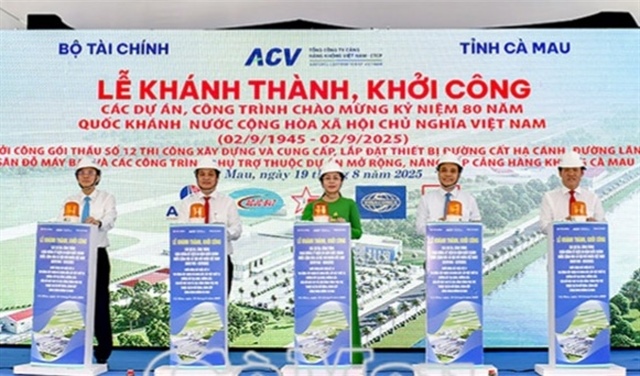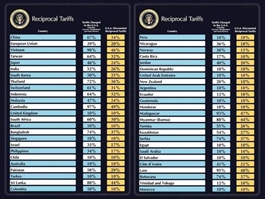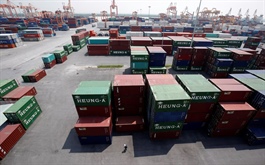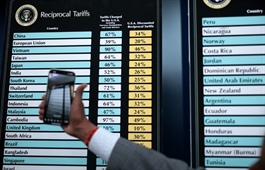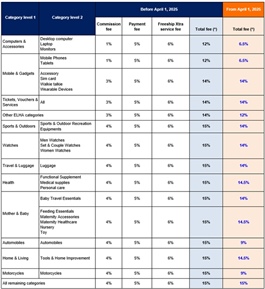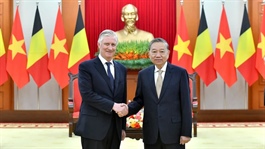The impact of Trump’s tariffs on Vietnam
The impact of Trump’s tariffs on Vietnam
The April 3 announcement that the Trump administration will impose 46 per cent “reciprocal tariffs” on Vietnam from April 9 was completely unexpected. Michael Kokalari, chief economist from VinaCapital, analyses the impact and potential solutions Vietnam should take.

Michael Kokalari, chief economist, VinaCapital |
Based on our analysis, these tariffs will make it difficult for Vietnam to achieve its 8 per cent GDP growth target. The market was expecting 10 per cent tariffs on Vietnam, and we expected even lower tariffs for several reasons: targeting Vietnam is against the US’ own interest and the economic problems these punitive tariffs would spawn – if fully implemented – will likely create issues for Republicans in the mid-term elections next year due to the likelihood that inflation will certainly increase.
The 46 per cent tariff figure is based on the Council of Economic Advisors (CEA) assessment that Vietnam is charging 90 per cent tariffs on imports of US products. That figure was essentially halved to the final 46 per cent “reciprocal tariff” rate on Vietnam by applying this formula, which can be found on the US Trade Representative’s (USTR) website, and which incorporates an estimate of the price elasticity of US imports and the pass-through of tariffs to consumer prices. This is the same approach we used to estimate our expected impact on Vietnam’s GDP from tariffs on exports from Vietnam above, and in our previous presentations on this topic.
However, the USTR published a report on April 1 asserting that “the majority of US exports to Vietnam face tariffs of 15 per cent or less”. Furthermore, there was some credible analysis from Bloomberg and others that Vietnam’s tariffs on imports from the US were about 7 per cent points higher than US tariffs on imports from Vietnam, and the two countries’ effective import taxes on each other are more-or-less equal when considering the trade weighted flow of commerce between them.
What should Vietnam do?
Trump asserted that Vietnam is charging 90 per cent tariffs on imports from the US, “including currency manipulation and trade barriers”. This figure was derived by dividing the US trade deficit with Vietnam by the US imports from Vietnam, or by dividing the $123 billion trade deficit with Vietnam in 2024 by its $137 billion of imports from Vietnam:
|
This calculation matches the “tariffs on US imports” figures Trump showed for various countries on the board he held up to reporters at his press conference announcing the tariffs, with the trade deficit and import figures directly sourced from Annex II of the USTR report published the previous day. An implicit rationale for this calculation also matches with Trump’s repeated rhetoric that countries that have large trade surpluses with the US are “ripping us off”. In short, the Trump administration seems to have based its entire trade and tariff strategy – or at least its entire opening negotiation position – on the numerical trade balances.
Consequently, it is extremely urgent for Vietnam to immediately start importing a lot more from the US. We have heard from secondary sources that Trump administration officials appreciate the initial efforts Vietnam is making to cooperate with efforts to reduce the numerical trade balance between the two countries, but US trade officials will not be assuaged by promises to make purchases at some future date.
We have also heard from energy industry executives that Vietnam could quickly start importing around $35 billion a year of LNG by using floating storage regasification unit ships, since the construction of proper LNG terminals will likely take years.
Next steps
The initial reaction of trade negotiation experts with extensive experience of negotiating between the US and Vietnam is that the initial 46 per cent figure announced yesterday is an opening negotiation move by the Trump administration. Intense negotiations between Vietnamese and US trade authorities are expected in the weeks ahead, but there is no consensus – even among these experts – of what the final tariff on Vietnamese imports is likely to be. Given how high his initial negotiating position is, it is hard to see a final figure of anything less than 25 per cent, which would represent a material hit to Vietnam’s GDP growth.
Market impact
Market participants and big US businesses alike did not expect tariffs of significantly more than 10 per cent on Vietnam’s exports to the US (companies in the US ramped up their imports from China and car imports from the EU in the lead-up to the April tariff announcement but did not significantly ramp up their imports from Vietnam).
The shocking announcement drove the VN-Index down nearly 7 per cent, but the selling was fairly uniform across-the-board, indicating that market participants will need more time and information to digest the likely impact of all of this on the economy and earnings growth. For example, IT outsourcer FPT’s stock price sold off about 7 per cent (limit down) even though tariffs would not directly affect the services it provides.
Also, the initial reaction of the USD-VND exchange rate has been surprisingly muted, depreciating by less than 1 per cent on the day and by less than 2 per cent year-to-date. Currency markets of countries that are targeted with tariffs usually see their currencies ultimately depreciate by about half the tariff amount, based on the experience of Mexico in the first Trump administration and other cases. We believe this is because there are so many details yet to be clarified, including the possibility of carve-out tariff exemptions for some specific products Vietnam exports to the US.
Investment strategy impact
We are currently assessing the impact of the tariffs on the scenarios we have in place for our various portfolios and are looking for buying opportunities to take advantage of any short-term weakness against the backdrop of the potential longer-term impact on both the Vietnam and global economies.
The sell-off gives active fund managers an opportunity to buy stocks that are fundamentally sound and will not be overly impacted by the tariffs at cheaper valuations. The most obvious potential beneficiaries are companies that would benefit from increased efforts by the government to offset the impact of tariffs on Vietnam’s GDP growth.
In February, the government increased its already ambitious plans to ramp-up infrastructure spending this year, and the US tariff news will require the government to push ahead with other measures to stimulate the domestic economy.
The April 3 announcement was far worse than we expected, and we will continue to work with our research team and investment team to build the best risk-adjusted portfolios. It is likely that several strong companies will become oversold based on the tariff announcement, so we will continue to invest with our disciplined approach and take advantage of what is still not positive news for Vietnam.
It will be interesting to see how Vietnam engages with the US, as well as other large trading partners to mitigate the short- and long-term impacts of these tariffs. Deputy Prime Minister Ho Duc Phoc is scheduled to travel to New York City this weekend. As the situation evolves and the implications become clearer in the coming weeks and months, we will share our updated views as well as how we are managing our portfolios based on the evolving economic environment.
- 10:42 04/04/2025




